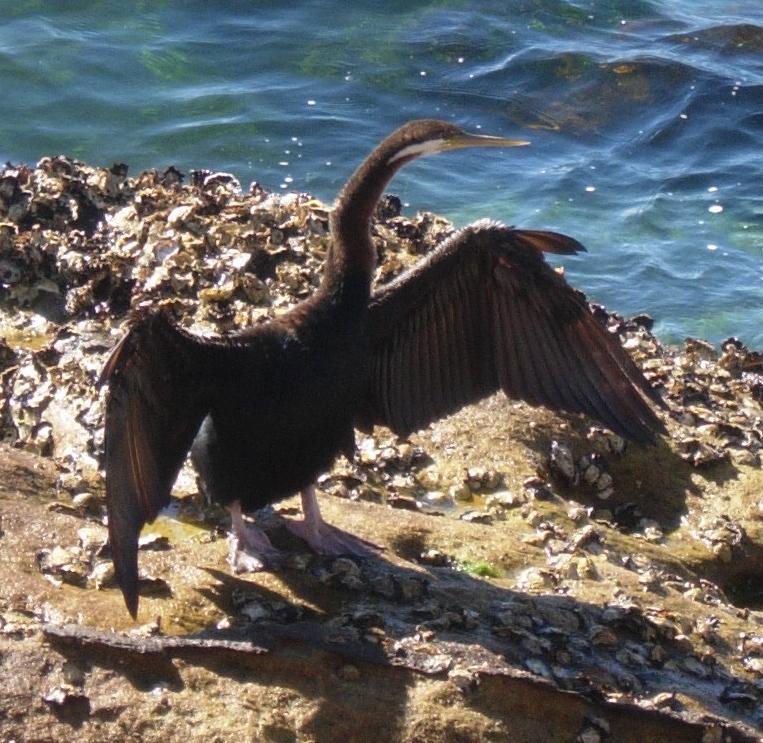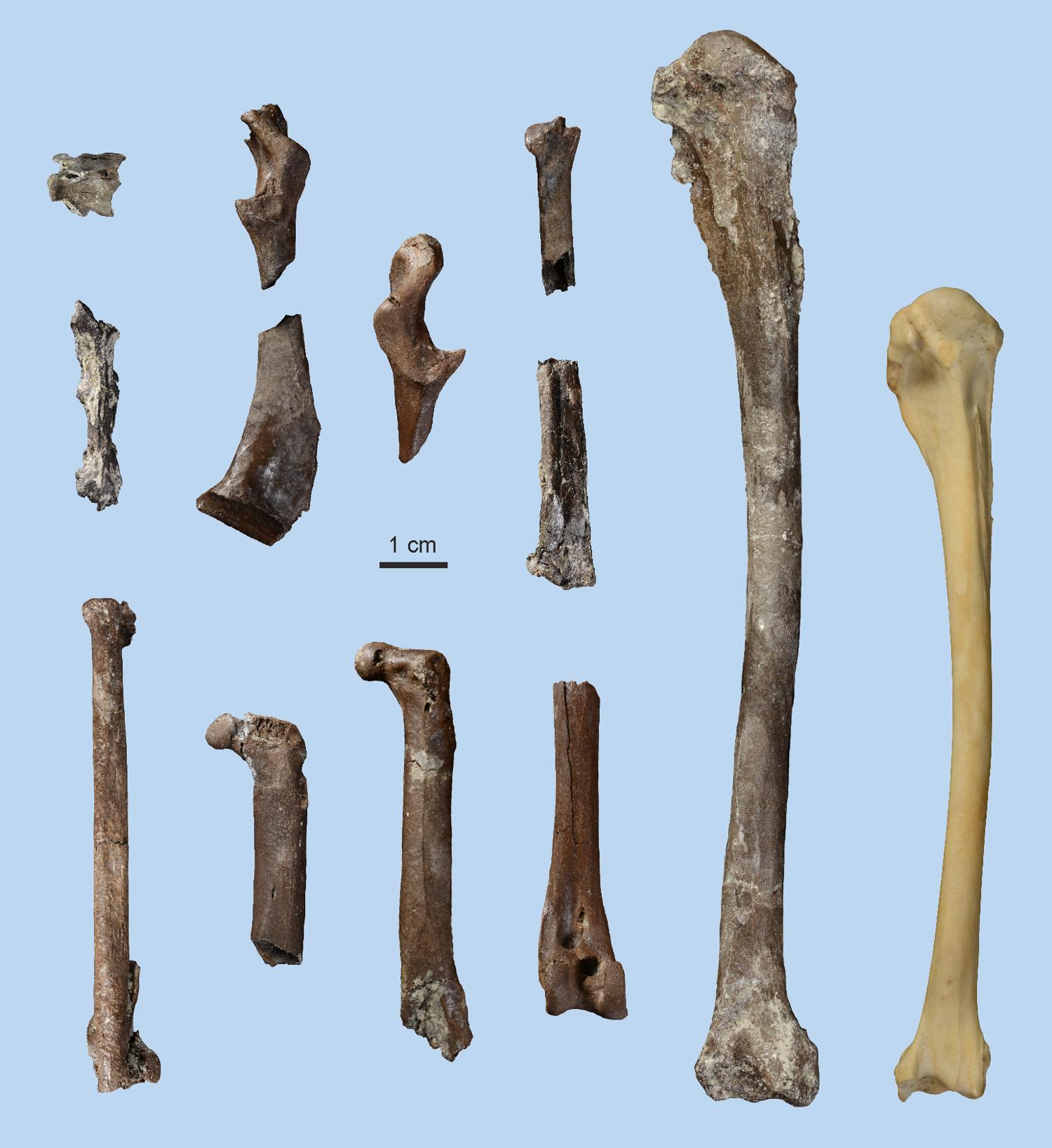News
06.05.2020
Tropical diving birds once lived in Germany
Palaeontologists find 11.5 million-year-old darter fossils alongside early primate remains in Bavaria
The Hammerschmiede clay pit in southern Germany - where Danuvius guggenmosi, the earliest known upright-walking ape was found - has also yielded spectacular bird fossils offering a glimpse of a very different world more than 11 million years ago. Researchers from the Senckenberg Research Institute Frankfurt and the University of Tübingen have discovered the bones of a large water bird from the site, which they identified as a darter, or snakebird. Their findings have just been published in PLOS ONE. The species, Anhinga pannonica, lived some 11.5 million years ago, and was considerably larger than its modern-day relatives.
Darters (of the genus Anhinga) are diving birds which today live around tropical and subtropical rivers and lakes. There are now four species that occur in South and Central America, in sub-Saharan Africa, and in tropical parts of Asia and Australia. When they are swimming, only their long, narrow necks and heads are visible above water. This looks a little like a snake and gave rise to the name “snakebird.” More commonly known as darters, the birds have a pointed, dart-like beak. The birds possess uniquely formes neck vertebrae which enable them to rapidly dart the beak forward. They can then spear fish and other prey with it.
The darter found at the Hammerschmiede site is a member of the extinct species Anhinga pannonica - which until now been documented only by a few disconnected bones. “The new finds now enable us to investigate the anatomy of this species in more detail. We have known of its existence since 1916, now we can understand it better,” says the head of the study, ornithologist Dr. Gerald Mayr, of the Senckenberg Research Institute in Frankfurt.
With a probable wingspan of more than 150 centimeters, the ancient darter was some 30 percent larger than its modern-day relatives. And weighing around 3.3 kilograms, Anhinga pannonica was more than twice as heavy. “Very large extinct darters have been documented primarily in South America, but the new finds show that these birds were far more widespread than we thought,” Mayr says. “The occurrence of this family of birds, which today only lives in the tropics, also provides clear evidence of the differences between the current avian environment in the Alpine foothills and the ecosystem existing more than 11 million years ago at the Hammerschmiede site,” he adds.
Darters are masters of the shallow dive; today’s species can hunt in water that is less than 50 centimeters deep. “That fits with the former watercourses at the Hammerschmiede site, with the stream bed that held the remains of Danuvius having been about 80 centimeters deep on average,” says Thomas Lechner, excavation supervisor and doctoral candidate at the Senckenberg Center for Human Evolution and Palaeoenvironment at the University of Tübingen. “A higher bodyweight, linked to a lower skeletal pneumaticity - that is, less air-filled cavities in the bones - and highly wettable feathers reduce the darter’s buoyancy, which helps it to dive,” says Professor Madelaine Böhme, who is also involved in the study. Mayr adds “To be able to fly again, today’s darters have to spread out their wings to dry after every dive. The higher evaporation rate in warmer climates is a significant reason for them to live in tropical regions.”
In their study, the researchers identified a number of other Anhinga pannonica fossils from Bavaria which had been thought to be cormorant bones. These bones are 16 million years old - making them the oldest known remains of this species of darters. The species became extinct six million years ago. Anhinga pannonica lived in a larger geographical area and for much longer time span than was previously known. “At around ten million years, this species was remarkably long-lived – a kind of Methuselah, even among birds. By contrast, mammal species only reach a duration of around 2.5 million years,” Böhme explains. “The geographic distribution of a thermophilic species above 50 degrees latitude, proven by finds from the Hambach opencast mine near Cologne, to the equator in Kenya, shows that the Earth’s climate in the Miocene Era (23-5 million years ago) was considerably warmer than it is today.”
Publication:
Gerald Mayr, Thomas Lechner, and Madelaine Böhme. The large-sized darter Anhinga pannonica (Aves, Anhingidae) from the late Miocene hominid Hammerschmiede locality in Southern Germany. PLoS ONE, 2020. DOI 10.1371/journal.pone.0232179
Contacts:
Dr. Gerald Mayr
Senckenberg Research Institute, Frankfurt
Ornithology section
Phone +49 69 75421348
gerald.mayr@senckenberg.de
Professor Dr. Madelaine Böhme
University of Tübingen
Senckenberg Center for Human Evolution and Palaeoenvironment
Phone +49 7071 29-73191
m.boehme@ifg.uni-tuebingen.de
Contact for press:
Eberhard Karls Universität Tübingen
Public Relations Department
Dr. Karl Guido Rijkhoek
Director
Antje Karbe
Press Officer
Phone +49 7071 29-76789
Fax +49 7071 29-5566
antje.karbe@uni-tuebingen.de
www.uni-tuebingen.de/en/university/news-and-publications
Senckenberg Nature Research Society
Press Office
Dr. Sören Dürr
Director
Judith Jördens
Phone +49 69 7542 1434
judith.joerdens@senckenberg.de
pressestelle@senckenberg.de
www.senckenberg.de/presse


